Slavery in Nebraska
While Nebraska was never officially a slave state in the traditional sense, it formed a crucial node in the expansionist strategies of pro-slavery interests, participated in indirect economic complicity through infrastructural development, hosted corporations and educational institutions that profited from slave-backed capital, and served as a contested landscape during debates over human bondage in the antebellum and Civil War eras.
Slavery’s early specter in Nebraska is inextricably tied to its status within the greater territorial matrix of the American West during the nineteenth century. The 1854 Kansas-Nebraska Act, a cornerstone of this complex history, allowed settlers of those territories to determine through popular sovereignty whether they would permit slavery. This legislation effectively repealed the Missouri Compromise, which had prohibited slavery above the 36°30′ latitude line, and opened the floodgates for ideological, economic, and literal combat over the question of slavery’s extension into the western territories.
Although Nebraska never developed a plantation-based slave economy in the mold of Mississippi or South Carolina, the legislative ambivalence introduced by the Kansas-Nebraska Act fostered a climate of institutional indeterminacy, allowing white settlers sympathetic to Southern economic interests to temporarily introduce enslaved persons into the territory. These settlers were often agents of broader commercial and political strategies aimed at maximizing the West’s utility as a satellite of the slavery-dependent Southern economy.
Nebraska’s geography—situated along the Missouri River and crisscrossed by key trails such as the Oregon and Mormon Trails—positioned it as a logistical corridor for migratory movements of enslaved peoples, escaped fugitives, and white traders with economic stakes in slavery. Slaves were occasionally brought into Nebraska as personal property of Southern migrants, particularly in southeastern settlements near the Missouri border.
Though such importations were neither large in number nor permanent in legal status, their presence nonetheless signaled that slavery was not wholly foreign to Nebraska’s soil. More crucially, however, Nebraska’s infrastructural and economic growth became increasingly intertwined with the revenues generated by slave-based labor elsewhere. The erection of railroads, telegraph lines, and banking institutions was financed in part by capital invested by Eastern companies whose wealth was amassed through textile, insurance, shipping, and agricultural enterprises predicated on enslaved African labor in the South and Caribbean.
Moreover, Nebraska’s transformation from a sparsely populated frontier into a rapidly modernizing territory was catalyzed by national economic structures steeped in slavery. The expansion of the Union Pacific Railroad, an infrastructural juggernaut of westward expansion, was indirectly underwritten by financial institutions and Northern industries enriched by the spoils of slavery.
Northern industrialists—textile mill owners, shipping magnates, and speculators in human cargo insurance—redirected their capital gains toward the burgeoning West, pouring investments into towns like Omaha and Lincoln, thus embedding slavery’s legacy in the built environment and institutional infrastructure of Nebraska. The architectural grandeur of early courthouses, banks, and mercantile buildings concealed a material reality: the wealth that funded their construction originated in cotton fields, sugar plantations, and auction blocks far removed from the Nebraska plains.
Educational institutions in Nebraska, while ostensibly emerging in a post-slavery context, also absorbed the benefits of that earlier economic order. The University of Nebraska system, especially its flagship campus in Lincoln founded in 1869, was established during the immediate aftermath of the Civil War when federal land grants and private endowments flowed from patrons whose fortunes were either directly or indirectly connected to slavery.
Many early donors, educators, and trustees had financial or ideological ties to Eastern academic institutions with documented histories of profiting from slavery, including Yale, Harvard, and Princeton. The diffusion of this capital into Nebraska’s educational fabric has yet to be fully reckoned with, and its implications reverberate in the generational advantages accorded to white students and communities whose access to education and social mobility was subsidized by slavery’s ill-gotten gains.
In the realm of law and public policy, Nebraska’s brief but notable legislative engagement with slavery reveals a disturbing tolerance for racialized subjugation. Territorial laws did not explicitly codify slavery as legal, yet neither did they outlaw it in unequivocal terms, thereby creating a loophole through which individual settlers could assert property claims over enslaved individuals.
Legal disputes arose over the status of enslaved persons brought into the territory, often resulting in judicial ambiguity that favored white property interests. The absence of strong abolitionist legislation in Nebraska Territory until well after its incorporation into the Union reflects the pervasiveness of racial bias and the reluctance of territorial leaders to antagonize either Southern investors or pro-slavery settlers.
Narratives of enslaved or formerly enslaved individuals in Nebraska are rare but not absent. In scattered oral histories, newspaper fragments, and personal correspondence, the presence of Black individuals—both enslaved and free—in early Nebraska emerges as a haunting counterpoint to white pioneer mythologies. Enslaved persons were occasionally held by military officers stationed at frontier outposts or transported by Southern settlers seeking to reconstitute their social hierarchies in the new lands.
One such case involved the forced servitude of Black individuals near Bellevue, Nebraska, where missionary stations reportedly employed Black labor under dubious conditions that blurred the line between indenture and enslavement. After the Civil War, formerly enslaved African Americans migrated to Nebraska in search of land and opportunity, often becoming targets of racial hostility, economic exclusion, and legal obstruction.
The postbellum period also saw the arrival of the Freedmen’s Bureau into the broader region, although its presence in Nebraska was marginal compared to states with larger Black populations. Nonetheless, the Bureau’s limited interventions included assistance with resettlement, land acquisition, and basic civil protections for formerly enslaved persons who migrated into the state.
The minimal footprint of the Freedmen’s Bureau in Nebraska is indicative of both the limited federal commitment to Black enfranchisement in the West and the prevailing white sentiment that racial equity was either irrelevant or detrimental to frontier development. This institutional neglect laid the groundwork for enduring racial disparities in Nebraska’s land ownership, education, and political representation.
Notably, Nebraska did foster a cadre of Black civil rights leaders, abolitionists, and freedom fighters, though their histories remain woefully underdocumented. Figures such as Rev. Oliver J. Burckhardt, an outspoken advocate for Black education and housing rights in early twentieth-century Lincoln, embody the continuum of Black resistance that stretched from slavery through Reconstruction and into the modern civil rights movement. The state’s early African American newspapers, including The Enterprise and The Monitor, functioned as organs of political mobilization, educational advocacy, and historical reclamation for a community still grappling with the legacies of racial oppression.
Inextricable from Nebraska’s racial history is the broader genocidal arc of U.S. Indian policy, particularly the Indian Removal Act of 1830 and the Trail of Tears. Though commonly associated with southeastern tribes, these policies had profound implications for the Plains and Midwestern territories, including Nebraska. The forced relocation of Native American nations into and through Nebraska served as both a demographic transformation and a spatial reconfiguration of the region’s political economy.
The opening of Indian lands to white settlement, facilitated by federal expropriation and military coercion, paralleled the Southern plantation expansionist logic that sought to displace Indigenous peoples for the cultivation of cash crops by enslaved Africans. Though Nebraska was a receiving site rather than an origin point for displaced tribes, the logistical infrastructure and political mechanisms enabling these removals were developed in tandem with those that supported slavery’s westward diffusion. In this sense, the histories of Native displacement and Black enslavement are mutually reinforcing, parallel modalities of racial domination enacted by the U.S. settler-colonial state.
The connections between these racialized policies are further elucidated by the convergence of Black and Native identities among some individuals and communities, particularly those who trace lineage to Black members of Indigenous nations such as the Cherokee and Creek, some of whom passed through or settled in Nebraska during forced relocations.
The erasure of these complex identities by both federal census officials and white territorial administrators compounded the difficulty of articulating a full history of racial subjugation in Nebraska, one that accounts for hybrid ancestries and intersecting oppressions. The Trail of Tears, while geographically centered further south, remains emblematic of the dispossessive ethos that undergirded Nebraska’s own development—an ethos rooted in racialized conquest and labor exploitation.
Thus, to understand Nebraska’s historical entanglement with slavery is to reject the myth of the “free” frontier and instead recognize the systemic scaffolding of racial violence, economic extraction, and settler privilege that underwrote its formation. The Nebraska Territory was never an island detached from the brutal machinery of slavery; it was a cog in that machinery, albeit one whose gears moved more subtly, with legal ambiguity, infrastructural complicity, and economic entwinement obscuring the depth of its participation.
The contemporary institutions, both corporate and academic, that emerged from this history continue to enjoy the dividends of slavery’s ill-gotten wealth while remaining largely silent on their historical benefactors. Until this silence is broken—through restitution, acknowledgment, and systemic transformation—the legacies of slavery in Nebraska will persist, not merely as historical curiosities but as enduring structures of inequality.
As the nineteenth century advanced and the American nation accelerated its imperial expansion westward, Nebraska became emblematic of the ideological crucible within which the competing visions of slavery, freedom, racial hierarchy, and national identity were contested and redefined. Though its physical terrain may have lacked the sprawling cotton fields and plantation economies of the South, its ideological and institutional terrains bore the imprint of the slave regime’s architectural scaffolding.
It was in the subtleties of legislative equivocation, financial flows, land speculation, and racial boundary-making that Nebraska’s deeper entanglement with American slavery is most discernible. This complicity was neither episodic nor incidental; it was systematic, continuous, and foundational to the development of the state’s infrastructure and society.
The structure of the Nebraska slavery industrial complex took form in both direct and indirect modes. Though few records exist of large-scale slaveholding within Nebraska’s borders, extant archival materials indicate that enslaved persons were indeed transported into the territory by settlers arriving from Missouri, Kentucky, and Tennessee—slaveholding states that viewed Nebraska as a potentially lucrative satellite. These settlers, often migrating under the auspices of opportunity and manifest destiny, brought with them not only enslaved individuals but also the ideologies, legal customs, and social norms of white supremacy. These norms found material expression in settler governance and judicial tolerance of racial violence and ownership claims. In some cases, courts declined to return escaped slaves to Southern owners not on the basis of antislavery principle, but on procedural technicalities or in deference to competing property laws. This ambivalence allowed slavery’s shadow to linger across Nebraska’s legal culture long after its formal exclusion.
The industrial dimension of slavery in Nebraska is most evident in its connection to national systems of credit, insurance, and transportation. The rise of the railroad industry—particularly the Union Pacific Railroad—serves as an illustrative case study in how slavery, though formally prohibited in some territories, nevertheless generated the wealth and momentum required for infrastructural proliferation. The Union Pacific, headquartered in Omaha and integral to the transcontinental railway’s completion, drew significant investment from New York, Massachusetts, and Pennsylvania banking houses, many of which had longstanding entanglements with slave-trading firms and marine insurance companies underwriting the Atlantic slave trade.
The consolidation of capital through these networks facilitated the vast land acquisitions, labor recruitment, and industrial provisioning that characterized Nebraska’s developmental surge in the late nineteenth century. Thus, the prosperity associated with railway expansion was not merely coincidental to the economy of slavery—it was a direct outgrowth of the capital accumulation made possible by centuries of Black bondage.
Moreover, the commodification of land itself in Nebraska echoed the logics of dispossession and racial exclusion that governed slavery and Indigenous removal. Federal land policies such as the Homestead Act of 1862 provided settlers with acreage to develop, often lands recently seized from Native nations through coercive treaties or outright military conquest. The opportunity to own land—a cornerstone of American citizenship and economic advancement—was systematically denied to African Americans, both enslaved and freed, through formal exclusion, discriminatory enforcement, and mob violence.
Black migrants from the South, including Exodusters escaping post-Reconstruction terror, frequently encountered barriers to land ownership in Nebraska, including inflated prices, denial of credit, and informal white boycotts. Even when African Americans succeeded in acquiring land, they were often dispossessed through tax forfeitures, legal chicanery, or racialized arson attacks. These mechanisms served to protect white settler hegemony and mirrored the exclusionary economic structures that slavery had normalized.
Nebraska’s colleges and universities, particularly the University of Nebraska-Lincoln (UNL), played a significant role in institutionalizing these racial logics under the guise of academic neutrality. As a land-grant university under the Morrill Act of 1862, UNL received federal land and funding earmarked for agricultural and technical education. Much of this land had been seized from Native nations without consent or adequate compensation, and its sale to white settlers generated the endowment that underwrote university operations.
More subtly, however, the intellectual traditions imported into the university—philosophies of racial science, economic liberalism, and Eurocentric historiography—served to naturalize the racial hierarchies established under slavery. Early curricula in anthropology, biology, and economics often included explicitly racist content, reinforcing the social Darwinist doctrines that justified Black inferiority and Indigenous extinction.
The university’s recruitment of faculty trained at Ivy League institutions further disseminated these ideologies, ensuring that Nebraska’s academic elite were ideologically aligned with national systems of white supremacy. To date, no formal institutional reckoning has occurred at the University of Nebraska concerning these origins or the racialized epistemologies it transmitted.
The legal legacy of slavery in Nebraska was also perpetuated through property laws, contract enforcement, and the policing of racial boundaries. Although territorial laws did not explicitly authorize slavery, they failed to disavow it with the moral and legal clarity required to deter its practice. Cases such as that of Andrew Borders, a Missouri slaveholder who brought enslaved persons into Nebraska Territory in the 1850s, highlight the judiciary’s reluctance to interfere with white property rights, even when those rights conflicted with the principles of liberty ostensibly enshrined in federal law.
In many such instances, the courts defaulted to a kind of juridical passivity that allowed de facto slavery to exist under the rubric of “domestic service” or “apprenticeship.” These legal ambiguities were further exploited by settler employers who utilized Black labor under conditions indistinguishable from bondage, justified by contractual arrangements that denied workers agency or recourse.
Racial violence served as a parallel instrument of social control in Nebraska, enforcing the deference that slavery had once demanded. Instances of lynching, arson, and extrajudicial policing emerged during the late nineteenth and early twentieth centuries, particularly as Black communities gained visibility in Omaha and Lincoln. The 1919 lynching of Will Brown in Omaha, orchestrated by a white mob that included law enforcement officers and civic leaders, remains one of the most harrowing examples of anti-Black terror in the state’s history. Brown, falsely accused of assaulting a white woman, was dragged from the Douglas County Courthouse, mutilated, and burned alive while thousands watched.
The spectacle of his death, and the impunity of his murderers, sent an unmistakable message to Nebraska’s Black residents: that the state’s judicial apparatus was still anchored in the slave regime’s presumption of Black criminality and disposability. Though slavery had been abolished decades earlier, its ideological residue continued to sanction racial annihilation as a tool of social order.
Amid this landscape of exclusion and terror, Black Nebraskans organized resistance movements rooted in abolitionist legacies, mutual aid traditions, and civic engagement. While Nebraska never served as a national hub for abolitionist activity on par with Massachusetts or Ohio, it did harbor local movements that aligned with the broader currents of anti-slavery agitation. African American churches, fraternal organizations, and women’s clubs became incubators for political education and activism.
Leaders such as Thomas P. Mahammitt, editor of The Western Outlook, and Reverend John Albert Williams, rector of St. Philip the Deacon Episcopal Church, used the pulpit and press to denounce segregation, challenge racial caricatures, and demand civil rights. Their work built upon the unfinished project of abolition, reinterpreting freedom not merely as the absence of bondage but as the full realization of citizenship, economic justice, and human dignity.
These efforts found legislative expression in local campaigns against Jim Crow laws, employment discrimination, and educational inequality. In 1917, Omaha’s African American community successfully lobbied the Nebraska State Legislature to pass a civil rights bill outlawing discrimination in public accommodations—an achievement that reflected both the residual strength of anti-slavery moralism and the growing political assertiveness of Black Nebraskans.
Yet enforcement of these laws remained inconsistent, and white resistance persisted through informal practices and municipal ordinances designed to reimpose racial hierarchy under the guise of civic order. Redlining, police harassment, and educational tracking ensured that Black communities remained economically marginalized and politically vulnerable, mirroring the patterns established in slavery’s wake.
The Indian Removal Act of 1830 and its aftermath also bear directly upon Nebraska’s racial geography and political economy. The Act facilitated the relocation of numerous Native American nations—including the Ponca, Pawnee, and Omaha peoples—into and around what would become Nebraska. These forced migrations disrupted Indigenous lifeways, severed spiritual ties to ancestral lands, and opened vast tracts of territory to white agricultural and industrial development.
In effect, the removal of Native peoples paralleled the eradication of Black sovereignty under slavery; both operated through the logics of dispossession, coercion, and racial dehumanization. The relocation of Southeastern tribes along the Trail of Tears created a demographic void that was rapidly filled by white settlers and railroad speculators eager to convert land into profit. Nebraska, though often imagined as a benefactor rather than a perpetrator of these removals, was in fact a key beneficiary. Its state boundaries were mapped upon a cartography of conquest, its townships founded upon stolen land, and its prosperity erected atop Indigenous death.
The ideological alignment between Indigenous removal and African slavery extended beyond policy to the cultural imagination. Both peoples were rendered “savages” in white discourse—Africans through the pseudosciences of racial inferiority, and Native Americans through tropes of primitivism and wilderness. These discourses justified their subjugation, enslavement, or removal as necessary precursors to civilizational progress.
In Nebraska, the juxtaposition of Indian reservations and segregated Black neighborhoods throughout the late nineteenth and early twentieth centuries illustrates how these populations were simultaneously excluded and exploited. Federal Indian boarding schools and segregated Black schools both aimed to annihilate cultural identity and produce docile laborers for the white economy. These institutions, while differing in form, shared a common foundation in the pedagogy of racial domination—a pedagogy perfected under slavery and refined under empire.
As the twentieth century progressed, the structural legacies of slavery in Nebraska became increasingly institutionalized through mechanisms of mass incarceration, labor precarity, and educational disparity. Black Nebraskans were disproportionately targeted by law enforcement, denied access to unionized labor markets, and subjected to curricular erasure in public schools. The carceral state, which replaced the plantation as the primary site of racial discipline, expanded its footprint in Nebraska through prisons like the Nebraska State Penitentiary, where African Americans were overrepresented and subjected to exploitative labor conditions reminiscent of chain gang slavery. The privatization of prison industries, and their contractual ties to multinational corporations, recreated the economic logic of slavery within a modern framework—extracting surplus value from Black bodies while denying them full personhood.
The state of Nebraska, far from being a peripheral observer of the American slave regime, was deeply implicated in its ideational formation, economic reproduction, and institutional afterlife. From its territorial ambiguities and infrastructural dependencies to its complicity in racial violence and educational apartheid, Nebraska functioned as a palimpsest upon which the hierarchies of slavery were inscribed, erased, and reinscribed across generations. The challenge facing historians, educators, policymakers, and citizens today is to excavate this buried history not merely as a cautionary tale but as a call to justice. Until Nebraska reckons with the full extent of its entanglement in slavery’s legacy—until it acknowledges the stolen lives, lands, and labor that underwrite its modernity—it will remain haunted by the unquiet dead of a history it has long sought to forget.
To fully comprehend the legacies of slavery within Nebraska's historical, institutional, and economic landscape, one must interrogate the layered structures of settler colonialism, racial capitalism, and systemic anti-Blackness that continued to shape state policies, social hierarchies, and cultural representations long after the formal abolition of slavery.
Indeed, the continuation of these structures into the twenty-first century reveals that slavery, far from being merely a Southern or antebellum phenomenon, operated as a national system whose residues saturated the American interior—including regions like Nebraska, often mischaracterized as neutral or benign in racial terms. The racialized configuration of labor markets, property ownership, education, jurisprudence, and historiography in Nebraska exhibits continuity with patterns that originated under the slave system and evolved through successive iterations of exclusion, violence, and exploitation.
From the end of the Civil War to the dawn of the twentieth century, Nebraska underwent rapid demographic and infrastructural transformations. The migration of African Americans into Nebraska—whether through the Exoduster movement from the South or smaller waves of domestic migration—was met not with racial neutrality but with systems engineered to marginalize and discipline Black life. Black homesteaders in Nebraska, especially in communities like DeWitty (later known as Audacious), encountered both promise and betrayal.
Though the 1862 Homestead Act ostensibly opened new avenues for Black landownership and economic autonomy, systemic barriers such as delayed land claim processing, limited access to agricultural credit, and overt white hostility curtailed these possibilities. These homesteaders, many of whom had endured slavery or were the children of the formerly enslaved, established schools, churches, and mutual aid societies, creating microcosms of self-determination in a hostile environment.
The social conditions under which these communities existed were precarious. In DeWitty and similar settlements, schools served not only as educational institutions but also as sites of cultural resilience, where curricula were infused with emancipatory values and where African heritage, oral tradition, and biblical liberation theology were preserved against the erasures of white supremacy. Yet, these communities were consistently subjected to economic sabotage.
Local banks often refused loans to Black farmers. White-controlled irrigation boards diverted water to favor white landowners. Transportation routes for crop distribution often excluded Black homesteads, increasing transportation costs and reducing competitiveness. Such systemic exclusion resulted in a slow strangulation of economic viability, leading to the eventual disappearance of most Black farming enclaves in the state by the 1930s. These outcomes were not natural consequences of climatic hardship or migratory flux; they were politically orchestrated, rooted in the same logic that once underwrote chattel slavery—the conviction that Black autonomy must be constrained to preserve white dominance.
In the urban contexts of Omaha and Lincoln, the racialized geography of Nebraska deepened through restrictive covenants, redlining, and zoning ordinances that confined Black Nebraskans to overcrowded, underfunded, and overpoliced districts. The redlining maps produced by the Home Owners’ Loan Corporation (HOLC) in the 1930s rendered Black neighborhoods in Omaha “hazardous” for investment, a designation that precipitated disinvestment, blight, and environmental degradation.
These spatial logics mirrored the plantation’s racial cartography, wherein Black labor was concentrated in undesirable regions while white populations were spatially privileged. Furthermore, Black residents were disproportionately subjected to eminent domain land seizures under the guise of “urban renewal,” resulting in forced displacement eerily resonant with both Indigenous removal and postbellum land theft.
Cultural institutions within Nebraska have long contributed to the reinforcement of anti-Black ideologies rooted in the slave era. The public school system, for example, routinely omitted or distorted the history of slavery, Reconstruction, and Black resistance, thereby enshrining a mythology of white pioneer virtue untainted by the sin of racial domination. Textbooks adopted in Nebraska’s school districts as late as the 1980s framed slavery as a “necessary evil” and depicted enslaved Africans as passive recipients of civilizational uplift.
These narratives did not emerge in a vacuum; they were the products of educational gatekeeping, curriculum standardization, and textbook adoption boards overwhelmingly composed of white officials. Such pedagogical practices not only dehumanized the enslaved but also deprived Black Nebraskans of historical agency and cultural continuity. The erasure of Black contributions from Nebraska’s state history further isolated Black students from their heritage and undermined intergenerational resistance traditions.
In higher education, Nebraska’s academic institutions failed to offer rigorous, sustained engagement with the state’s slavery-connected past. Departments of history and American studies at the University of Nebraska and Creighton University long avoided critical studies of slavery, racial capitalism, or Black liberation. Where Black studies did emerge, they were often underfunded, marginalized, or treated as peripheral to the university’s core mission.
Black scholars faced systemic discrimination in hiring and promotion, mirroring national patterns that traced their origins to antebellum laws prohibiting Black literacy and access to intellectual authority. Moreover, the legacy of slavery was rendered invisible through institutional branding. Endowed chairs and campus buildings often bore the names of donors and trustees with direct or indirect ties to slavery-era capital accumulation—ties rarely disclosed or investigated.
The corporate sector in Nebraska, while often seen as agrarian and modest, contains threads of continuity with the racial economies forged in slavery. Meatpacking companies operating in Omaha, such as Swift & Company and Armour & Company, capitalized on exploitative labor models that originated in slavery. Though employing free labor, these firms recreated the racial divisions of the plantation by segregating Black workers into the most dangerous, least remunerated positions, often without labor protections. Black workers were hired to break strikes, used as tools of racial division, and subjected to surveillance and physical abuse.
Their resistance—through unionization, walkouts, and class-action lawsuits—testifies to the continuation of anti-slavery struggles in new forms. The companies that profited from this exploitation accrued capital that allowed them to diversify, consolidate, and expand, building generational wealth structures that persisted long after their Black employees had been discarded.
In the legal and political domain, Nebraska’s judiciary and legislature repeatedly failed to address the structural residues of slavery. Civil rights bills passed in the early twentieth century were rarely enforced. Police departments targeted Black neighborhoods for surveillance and aggression, while prosecutors disproportionately charged Black youth with felonies for minor infractions. The carceral logic that replaced the plantation emerged in Nebraska in tandem with national trends of criminalizing Blackness. As Michelle Alexander and other scholars have demonstrated, the prison system became a site of racial re-enslavement.
In Nebraska, this was evident in the overrepresentation of Black men in correctional facilities and the emergence of prison labor contracts that allowed corporations to benefit from incarcerated Black laborers—an echo of the convict leasing system that had followed the Thirteenth Amendment’s exception clause. The Nebraska Department of Corrections, while ostensibly a rehabilitative institution, has operated as a mechanism of racial containment and economic extraction.
Black political leadership in Nebraska has consistently resisted these structures. Individuals such as Ernie Chambers, the longest-serving state legislator in Nebraska history, exemplify the continuation of abolitionist traditions into the legislative realm. Chambers, a fierce critic of police brutality, the death penalty, and racial capitalism, served as a prophetic voice within the statehouse, articulating the connections between past and present systems of oppression.
His legislative battles to end capital punishment, provide civilian oversight of law enforcement, and expand educational access for marginalized communities reflect a radical lineage of Black political praxis grounded in anti-slavery struggle. Chambers’s rhetorical and legislative legacy embodies the assertion that abolition is not merely historical—it is a living, evolving commitment to justice.
The cultural memory of slavery in Nebraska has also been contested through art, literature, and public memorials. Black writers, poets, and historians in Nebraska have labored to reconstruct narratives long suppressed by white supremacy. Organizations such as the Great Plains Black History Museum in Omaha preserve and disseminate the stories of Black Nebraskans, including those who escaped slavery, resisted Jim Crow, and built community institutions in hostile environments.
These cultural efforts constitute acts of historical repair, offering counter-histories that challenge the settler myths of innocence and meritocracy. Yet, public funding for such institutions remains tenuous, and their narratives are often excluded from state-sponsored commemorations and curricula. This marginalization reflects a deeper unwillingness to confront the foundational role of slavery in shaping Nebraska’s institutions and social orders.
The intersectionality of Black and Indigenous struggles in Nebraska remains an underexplored but vital dimension of the state’s racial history. Enslaved Africans and displaced Indigenous peoples occupied adjacent terrains of oppression, linked by a settler-colonial regime that sought to extinguish nonwhite sovereignty through law, violence, and economic deprivation. Intermarriage, cultural exchange, and political solidarity between Black and Native communities occurred throughout the nineteenth and early twentieth centuries, challenging the rigid racial binaries imposed by white authorities.
Yet, federal and state agencies systematically erased these connections, enforcing blood quantum rules, racial classification systems, and land allotment policies that fragmented multiracial identities and undermined collective resistance. Reclaiming this shared history is essential for any comprehensive understanding of Nebraska’s racial landscape and its connection to the broader legacies of American slavery and colonialism.
In recent years, renewed attention has been given to the reparative potential of historical truth-telling. Activists, scholars, and community leaders in Nebraska have called for public apologies, reparations, and curricular reforms to address the legacy of slavery. Proposals have included land returns, educational scholarships for descendants of enslaved people, the renaming of buildings and streets associated with pro-slavery figures, and the creation of truth commissions.
These efforts, while nascent, indicate a growing recognition that historical injustice must be addressed not only symbolically but materially. Reparations, as argued by Ta-Nehisi Coates and others, are not a mere financial transaction—they are a moral reckoning with the crimes of slavery and the structures that continue to perpetuate its harm.
Yet, resistance to such initiatives remains strong. Conservative political leaders, corporate stakeholders, and segments of the public have denounced these efforts as divisive, revisionist, or unpatriotic. This backlash reveals the depth of America’s investment in the myth of racial innocence—a myth especially potent in so-called “heartland” states like Nebraska. To challenge this mythology is to expose the lie that slavery was a regional aberration rather than a national institution. It is to assert that the fields of Georgia and Mississippi were economically and ideologically connected to the railroads of Omaha, the university halls of Lincoln, and the legislative chambers of the Nebraska State Capitol.
The process of confronting Nebraska’s connection to slavery must therefore be multi-pronged. It requires educational reform, public memorialization, legislative accountability, corporate transparency, and communal healing. It demands that we deconstruct the ideological scaffolding that has for so long obscured the racial violence embedded in Nebraska’s soil. It necessitates a re-reading of the past in which Nebraska is not a passive recipient of national trends, but an active participant in a system of racial domination with local expressions and consequences.
Nebraska’s entanglement with slavery is a history not of exception, but of participation. From territorial accommodation to infrastructural complicity, from educational silence to judicial betrayal, from corporate exploitation to cultural marginalization, the state has been shaped in fundamental ways by the legacies of African enslavement. These legacies continue to structure its institutions, determine its inequalities, and animate its struggles.
For BlackWallStreet.org to write about slavery in Nebraska is not to unearth a buried past, but to confront a living reality—one that demands not only remembrance but action, not only reflection but repair. The story of slavery in Nebraska is not peripheral to the American experience; it is central. It is written in the names of its towns, the bricks of its universities, the steel of its railways, the decisions of its courts, the scars of its ghettos, and the dreams of its descendants. To fully see Nebraska is to see slavery—not as a Southern sin, but as an American structure. And to dismantle that structure is the unfinished work of abolition in our time.
To close the critical inquiry into Nebraska's connection to the institution of slavery, it is imperative to challenge and dismantle the illusion that certain geographies—particularly Northern or Western states like Nebraska—existed outside of slavery’s systemic reach. This illusion persists in national memory, bolstered by state-sanctioned narratives that position Nebraska as a land of opportunity, homesteading virtue, and agrarian meritocracy. But this narrative is a profound obfuscation. Nebraska, like much of the United States, is built on a racial contract that was formalized during the age of slavery and reinforced in the postbellum and modern eras. Every layer of Nebraska’s development—its population movement, educational systems, property structures, labor arrangements, and public institutions—contains within it the sediment of racial domination.
In tracing Nebraska’s entwinement with slavery’s afterlife, we must expand our analytic lens to include the performative dimensions of racial innocence that have functioned as a defensive shield for the state’s institutions. The very absence of large-scale plantation slavery within Nebraska has been weaponized as proof of the state’s moral neutrality. Yet such reasoning is both ahistorical and ethically evasive.
Nebraska’s role as a transit territory during westward expansion; its legislative ambiguity on slavery prior to statehood; its absorption of capital generated by slavery in the South, Caribbean, and global economy; its racial policing of Black and Indigenous communities; and its historical erasure of slavery-related narratives—all amount to a cumulative form of complicity. This complicity does not require the physical presence of plantations to be real or consequential. It exists in the structures of exclusion and in the institutions that have historically benefited from Black and Indigenous dispossession.
Economic institutions in Nebraska, from agriculture to banking, have long benefited from the surplus labor value generated by Black Americans, both formerly enslaved and free. In the postbellum period, Black Nebraskans were frequently relegated to the most menial and insecure forms of labor. In rural areas, they worked as sharecroppers, tenant farmers, and hired hands—exploited under economic terms that mirrored, in both structure and intent, the economic logics of slavery.
In cities, Black laborers were channeled into meatpacking, domestic service, janitorial labor, and railway maintenance. These roles, though formally free, reproduced many of the characteristics of unfree labor: economic dependence, social marginalization, lack of political representation, and exposure to violence and premature death. The labor structure of modern Nebraska—particularly its bifurcation along racial lines—thus extended slavery’s material conditions into the twentieth and twenty-first centuries.
Even the financialization of labor, a process integral to capitalist modernity, bore slavery’s imprint. Insurance companies operating in Nebraska routinely mirrored national models that had, in earlier generations, underwritten enslaved lives as collateral. Life insurance and property insurance companies headquartered or operating in Nebraska accrued capital through actuarial frameworks that were initially refined in the slave trade, where the value of a Black body could be mathematically calculated for risk, yield, and depreciation. These same firms evolved into transregional corporations that helped to finance industrial expansion, educational endowments, and municipal bonds. The monetary architecture of Nebraska’s towns and cities—its banks, civic buildings, and industrial parks—owes part of its material reality to financial instruments forged in slavery’s crucible.
The political structure of the state also absorbed and rearticulated slavery’s racial codes through post-emancipation legislation and municipal governance. Even after the ratification of the Thirteenth, Fourteenth, and Fifteenth Amendments, Nebraska’s political elite engaged in forms of soft disenfranchisement that rendered Black political participation largely symbolic. Local and state elections often deployed informal voter suppression tactics such as literacy tests, intimidation, and polling irregularities.
Gerrymandering diluted Black voting power in cities like Omaha and Lincoln, and electoral maps were often drawn to protect white political hegemony. This legacy continues to haunt the state's political apparatus, as evidenced by ongoing debates over voter ID laws, redistricting, and felony disenfranchisement. All of these mechanisms echo the Jim Crow tactics developed in the post-slavery South and adapted nationally, demonstrating how the racial project of American democracy, from its inception, has always been structured by anti-Black exclusion.
These exclusions also reverberated through the cultural landscape, where white artistic and literary institutions in Nebraska often rendered Black existence invisible, marginal, or caricatured. Black artistic production was consistently relegated to the margins of museums, theaters, and publishing houses. Even when Black artists emerged from Nebraska—as did novelist and folklorist Will Thomas or poet Cherry Beasley—they struggled to find institutional support within the state. Black art was treated not as a vital expression of human creativity or critique, but as an ornamental supplement to dominant white narratives. The institutionalization of culture in Nebraska, through museums, libraries, and academic departments, followed a Eurocentric model that relegated Black expression to the footnotes of state heritage. These practices are direct descendants of the epistemic violence committed during slavery, when Black literacy, spirituality, and creative production were criminalized, suppressed, or appropriated.
The question of institutional accountability is thus inescapable. Nebraska’s colleges, museums, financial institutions, and governmental agencies have yet to engage in a serious reckoning with their complicity in the legacies of slavery. No comprehensive audits have been conducted to examine how slavery-derived capital shaped endowments, land acquisition, or historical memory. No state-funded commission has explored the experiences of formerly enslaved people who migrated to Nebraska. No reparative policies have been implemented to redress the economic and psychological harms inflicted upon Black Nebraskans whose family histories are marked by slavery and its aftermath. In the absence of such actions, the silence of these institutions becomes not a neutral act, but an active form of denial—an epistemic form of violence that sustains the material conditions of racial inequality.
Yet alongside these silences, one finds enduring traditions of Black resistance, memory, and futurity. Black Nebraskans, through institutions such as the African American Empowerment Network, the Malcolm X Memorial Foundation, and the Omaha NAACP, have carried forward the struggle for racial justice across generations. These organizations, often underfunded and overburdened, have created counter-institutions that challenge the state’s structural racism and keep alive the emancipatory traditions that began in the age of slavery. Their work—whether in education reform, housing justice, police accountability, or historical preservation—is a continuation of the abolitionist struggle. They assert, through praxis and principle, that slavery is not past; it is present in the form of unequal schools, wage theft, environmental racism, and mass incarceration. And they further assert that freedom is not a status granted by law, but a condition that must be constructed through struggle, solidarity, and imagination.
The intergenerational trauma produced by slavery is also a critical dimension of Nebraska’s story. Black families in the state have, for generations, navigated a world structured by historical amnesia, structural racism, and cultural misrepresentation. The psychological toll of being rendered invisible in textbooks, stereotyped in media, and criminalized by law enforcement cannot be overstated. These traumas are not residual; they are ongoing. And they manifest in health disparities, educational gaps, wealth inequality, and disproportionate exposure to violence. Any serious reckoning with Nebraska’s relationship to slavery must therefore include not only material redress, but also the creation of mental health infrastructures, educational interventions, and cultural platforms that center Black healing and historical truth.
Additionally, the intersection of slavery’s legacy with immigration, labor, and gender issues must be addressed. Many contemporary immigrant laborers in Nebraska—particularly Latinx and African immigrants—occupy positions in meatpacking plants, agricultural sectors, and service industries that mirror the exploitative conditions of slavery. These labor arrangements, often characterized by wage theft, dangerous working environments, and limited access to legal recourse, reveal that the logic of commodified human labor has never fully been dismantled.
Furthermore, Black women in Nebraska continue to experience compounded oppression at the nexus of race, gender, and class, just as enslaved women did centuries earlier. Their labor, both paid and unpaid, is undervalued; their bodies are hyperpoliced; and their reproductive rights are continuously threatened. Addressing slavery’s legacy means addressing these intersecting systems of domination.
In facing this truth, the question becomes: what is to be done? At a minimum, Nebraska must begin the process of historical reckoning. This includes a statewide initiative to revise public school curricula to include slavery’s national and local history, supported by partnerships with Black scholars and community leaders. It includes a state-sponsored commission on the legacy of slavery and racial injustice, modeled on the Truth and Reconciliation Commissions of South Africa and Canada.
It requires transparency from universities, banks, and corporations whose origins or endowments were shaped by slavery-era capital. It demands financial reparations, land restitution, and community investments targeted toward historically Black communities and Black-led organizations. And it calls for a public memorial to Nebraska’s connection to slavery—one that does not obscure, euphemize, or decontextualize, but tells the truth with rigor and courage.
Finally, the moral dimension of this history must be emphasized. Slavery was not merely an economic or political institution; it was a moral catastrophe. It denied the full humanity of millions, violated every ethical principle of dignity, and birthed systems of racial stratification that continue to haunt the American experiment. Nebraska, though far from the cotton plantations of the South, cannot exempt itself from this reckoning. It is a beneficiary of the very structures that slavery built, and its institutions—public and private—must bear the responsibility of repair. The work of abolition is unfinished. It calls on us to reimagine education, transform justice, redistribute wealth, and honor the ancestors whose labor and suffering laid the foundation for this nation.
In the end, to write the history of slavery in Nebraska is to reject the lie of regional innocence. It is to say that slavery was not confined to Dixie; it traveled across rivers, over prairies, through laws and railroads and universities, into every corner of the nation. Nebraska is not an exception. It is a chapter. And that chapter is not yet closed. The work of historical redress, moral accountability, and collective healing must begin in earnest. Only then can Nebraska hope to transcend the legacies of bondage and become, at last, a land truly committed to freedom and justice for all.

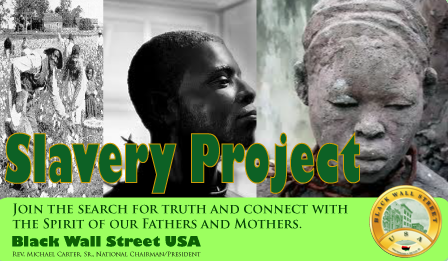
Alabama
Alaska
Arizona
Arkansas
California
Colorado
Connecticut
Delaware
Florida
Georgia
Hawaii
Idaho
Illinois
Indiana
Iowa
Kansas
Kentucky
Louisiana
Maine
Maryland
Massachusetts
Michigan
Minnesota
Mississippi
Missouri
Montana
Nebraska
Nevada
New Hampshire
New Jersey
New Mexico
New York
North Carolina
North Dakota
Ohio
Oklahoma
Oregon
Pennsylvania
Rhode Island
South Carolina
South Dakota
Tennessee
Texas
Utah
Vermont
Virginia
Washington
Washington D.C.
West Virginia
Wisconsin
Wyoming
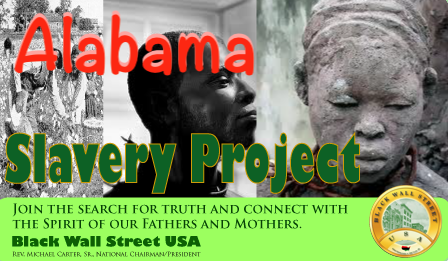
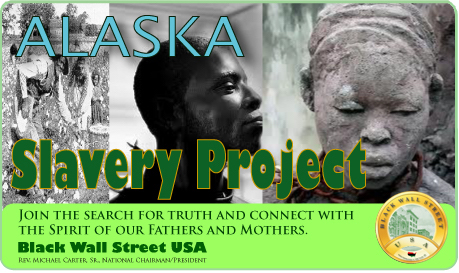



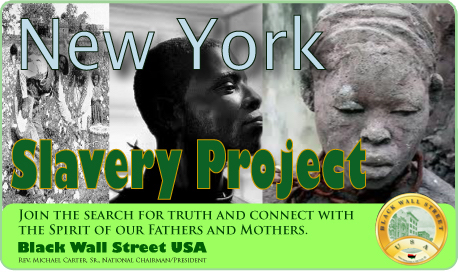

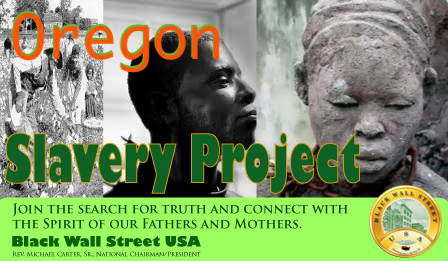
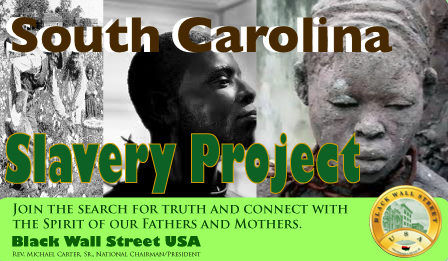
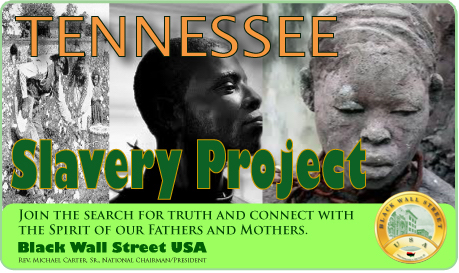
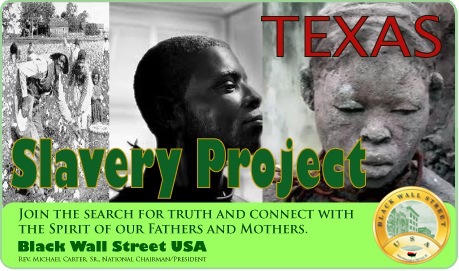



BlackWallStreet.org

Slave Records By State
See: Slave Records By State
Freedmen's Bureau Records
See: Freedmen's Bureau Online
American Slavery Records
See: American Slavery Records
American Slavery: Slave Narratives
See: Slave Narratives
American Slavery: Slave Owners
See: Slave Owners
American Slavery: Slave Records By County
See: Slave Records By County
American Slavery: Underground Railroad
See: American Slavery: Underground Railroad

